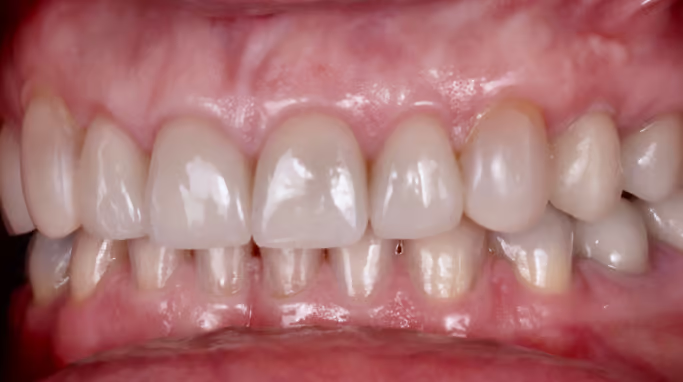Tooth wear is the process of gradual loss of tooth structure over time due to various factors. This loss of tooth structure can lead to a range of dental problems, such as sensitivity, cracks, chips, and decay. Resulting loss of tooth structure will also negatively affect your aesthetics and general function of your teeth. At Enamel we will make sure we get the correct diagnosis, ensuring the ideal treatment outcome.


Tooth wear is irreversible, so it’s crucial to change your daily routine as soon as you notice the signs.
Some common signs of tooth wear include:
If left untreated, tooth wear can lead to serious dental problems. People with worn teeth are at higher risk for tooth chips and cracks, receding gums, and tooth decay.
There are several types of tooth wear, including:
This occurs when teeth wear down due to natural chewing and grinding. It is a common cause of tooth wear, especially among older adults.
This occurs when tooth enamel is worn down due to external factors such as brushing too hard, using a hard-bristled toothbrush, or abrasive toothpaste.
This occurs when tooth enamel is lost due to exposure to acidic substances, such as acidic foods and drinks or gastric acid from acid reflux disease. Erosion can also be caused by dry mouth, which increases the risk of acid attack damage, and contact with stomach acid due to vomiting and gastric reflux.
This occurs when tooth enamel is lost due to excessive and repeated loading, which leads to microfractures and subsequent loss of tooth structure.
Erosion is the most common type of tooth wear. It occurs when the tooth’s enamel is dissolved due to contact with acidic substances such as citrus fruits, wine, coffee, and soft drinks. Many of these substances also have a high concentration of sugar, which contributes to tooth decay.
When your teeth become eroded, they may appear more yellow. Teeth may also appear thinner than normal and appear transparent around the edges.
Erosion can also be caused by dry mouth, which increases the risk of acid attack damage, and contact with stomach acid due to vomiting and gastric reflux.
The treatment of tooth wear depends on the severity and type of wear. In some cases, tooth wear may not require treatment if it is mild and not causing any symptoms or functional issues. However, if left untreated, it can progress and lead to more significant problems, such as tooth sensitivity and decay .
Restorative dental procedures such as fillings, crowns, or veneers can be used to restore lost tooth structure and protect the remaining tooth from further damage. Dental bonding or enamel microabrasion may be used to repair minor tooth wear or cosmetic concerns.
For severe cases of tooth wear, full-mouth rehabilitation may be required to restore the occlusion (bite) and overall function of the teeth. This may include a combination of restorative and cosmetic procedures, such as crowns, bridges, implants, and orthodontics.
Preventive measures such as using a soft-bristled toothbrush, avoiding abrasive toothpaste, reducing consumption of acidic foods and drinks, and wearing a mouthguard to prevent tooth grinding or clenching can also help to minimize tooth wear and prevent further damage.
Book an appointment on our new booking service with one of our oral health professionals and specialists in different fields of dentistry.
If you require urgent assistance or have a dental emergency, kindly email hello@enamel.clinic or contact our WhatsApp line +27 60 941 0291